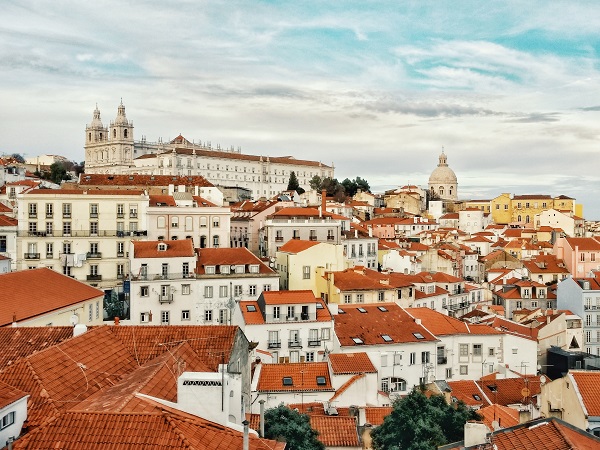The cost of living in Portugal in 2025
Discover the cost of living in Portugal: rent, food, healthcare, education.
With prices rising steadily, Lisbon and the Algarve continue to be the most expensive regions, while more affordable opportunities can still be found in areas like Centro and Alentejo. But is now the right time to buy? What’s driving the market, and how does Portugal compare to other European countries?

Despite the recent surges in prices, Portugal remains one of the more affordable real estate markets in Western Europe. According to the National Statistics Institute (INE), the average housing price in Portugal was €2,622 per square meter in April 2024. This is significantly lower than in countries like France and the United Kingdom, where average property prices are higher.
However, property prices in Portugal vary considerably by region. The Lisbon Metropolitan Area commands the highest prices, with an average of €3,644 per square meter, followed by the Algarve at €3,334 per square meter. In contrast, more affordable regions include Centro and Alentejo, with average prices of €1,448 and €1,507 per square meter, respectively.
For those seeking budget-friendly options, cities such as Évora, Elvas, Coimbra and Aveiro in the Centro and Alentejo regions offer properties below €1,000 per square meter. These areas provide a blend of historical charm and modern amenities, making them attractive to both investors and homebuyers.
Average house prices in Portugal by region (April 2024):
| Region | Price (€/m²) |
|---|---|
| Lisbon Metropolitan Area | €3,644 |
| Algarve | €3,334 |
| Madeira | €3,003 |
| Norte | €2,168 |
| Centro | €1,448 |
| Alentejo | €1,507 |
| Azores | €1,485 |
Source: National Statistics Institute (INE), April 2024

As of December 2024, the median house price in Portugal reached €2,827 per square meter, marking a historic high.
The Algarve remains one of the most expensive regions for property acquisition, driven by strong foreign interest. Notably, the 'Golden Triangle' — encompassing Vale do Lobo, Quinta do Lago, and Almancil — commands premium prices.
In Quinta do Lago, for instance, the average property price stands at €9,850 per square meter, with luxury villas reaching up to €12,300 per square meter. While coastal areas demand higher prices, properties located just a few kilometers inland are often more affordable.
The Lisbon Metropolitan Area continues to be a high-demand market, reflecting its status as the capital and a major financial and tourist hub. In December 2024, the median property price in Lisbon was €3,644 per square meter.
Within the city center, prices for large apartments can exceed €2,500 per square meter, with prime locations commanding even higher figures.
The Norte region, which includes the city of Porto, offers a more moderate price point. As of December 2024, the median property price in this region was €2,168 per square meter.
Porto, as the region's economic and cultural center, typically exhibits higher property prices compared to smaller cities within the Norte region.
The autonomous regions of Madeira and the Azores also present unique real estate opportunities. In December 2024, the median property price in Madeira was €3,003 per square meter, while the Azores stood at €1,485 per square meter. These regions attract buyers seeking picturesque landscapes and a tranquil lifestyle.
It's important to note that these figures represent regional averages. Major metropolitan areas and prime coastal locations often have higher property prices, while rural and less developed areas may offer more affordable options.
As of early 2025, concerns persist regarding the sustainability of Portugal's escalating real estate prices.
Younger Portuguese citizens are increasingly finding it challenging to purchase their first homes.
Despite efforts to boost housing construction, a significant shortage of affordable new builds remains in many regions. In response, the Portuguese government has enacted legislation permitting residential construction on previously restricted rural land to alleviate the housing crisis.
Portugal's economy demonstrated resilience in 2024, with a GDP growth of 1.9%, slightly surpassing the government's forecast of 1.8%. This growth was primarily driven by increased private consumption, supported by tax reductions, wage hikes, and pension enhancements. The unemployment rate declined to 6.5% by the end of 2024.
The International Monetary Fund (IMF) projects Portugal's GDP growth to reach 2.35% in 2025, indicating a positive economic trajectory.
Portugal's fiscal health has also improved, with government debt decreasing to 94.4% of GDP in 2024, down from 99.1% in 2023.
The yield on Portuguese ten-year bonds has stabilized, reflecting increased investor confidence in the country's economic management.
The ratio of house prices to GDP per capita in Portugal remains relatively low compared to other European nations. This suggests that, despite rising property values, the market may still offer viable investment opportunities without significant overvaluation concerns.
You can blame reality TV shows, bestselling expat memoirs like Peter Mayle’s A Year in Provence or Chris Stewart’s Driving Over Lemons, or even the era of low interest rates and easy credit — but the truth is, affordable residential property is increasingly rare across Europe.
That said, Portugal remains one of the few countries still offering attractive property prices. Unlike some other so-called "bargain" destinations, Portugal boasts modern infrastructure, a transparent legal system, and strong property rights protections, making it a safer investment for buyers.
For foreign buyers, Portugal sweetens the deal with favorable tax incentives. Until 2024, the Non-Habitual Resident (NHR) program provided tax benefits for expatriates for up to ten years. While this program has officially ended for new applicants in 2024, alternative tax incentives and residency schemes — such as the Golden Visa — still attract international buyers.
And, of course, let’s not forget Portugal’s lifestyle perks — the warm climate, stunning coastline, and delicious pastéis de nata! What more could you ask for?